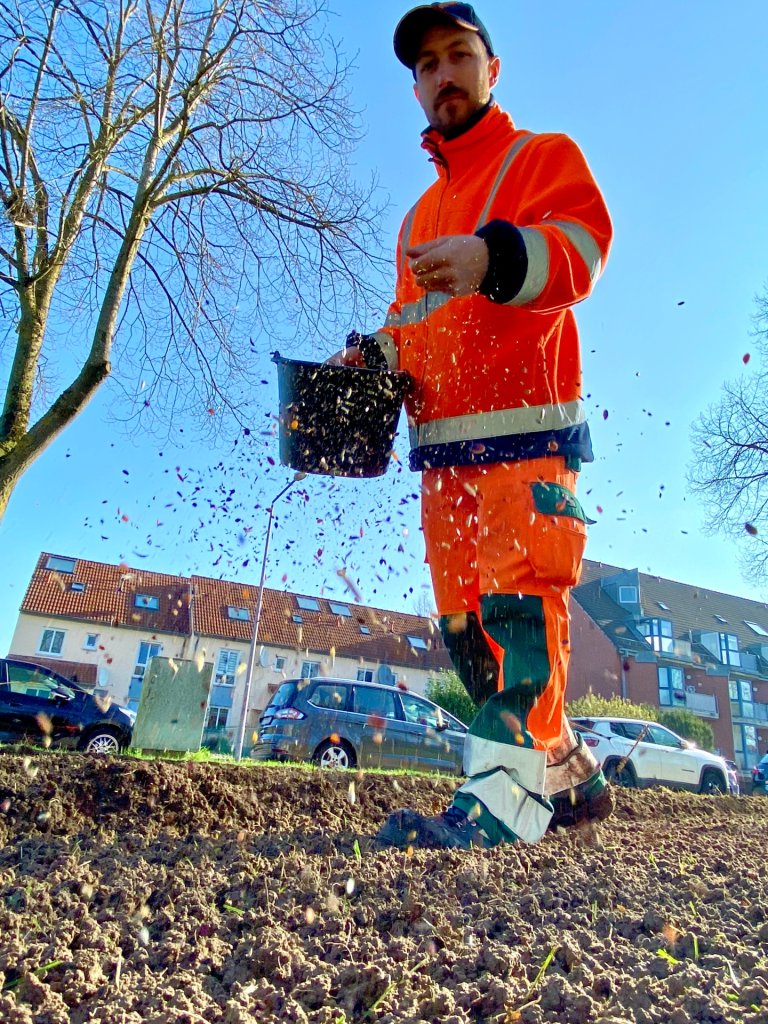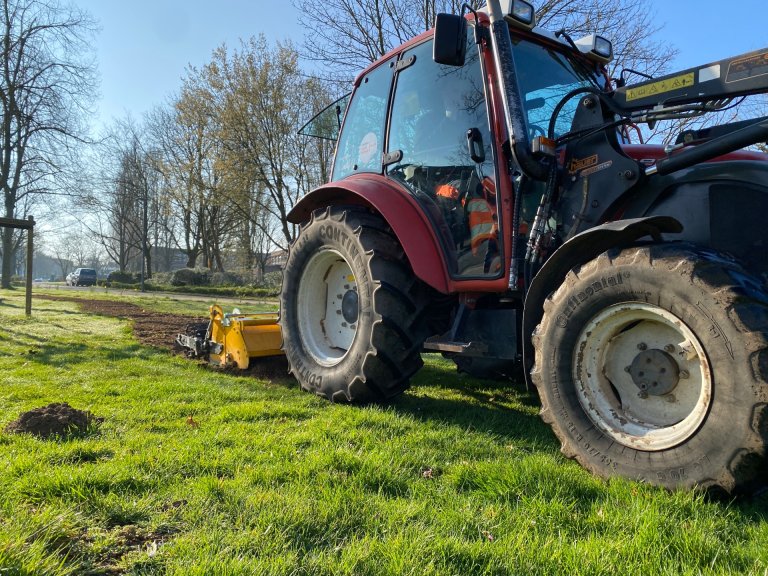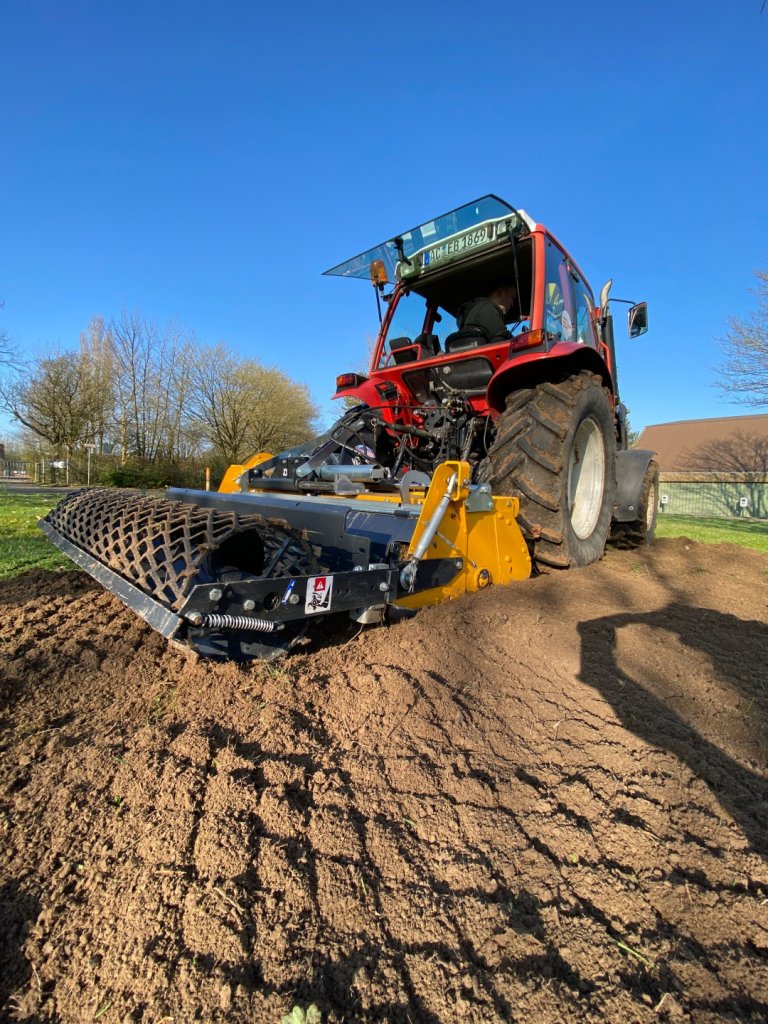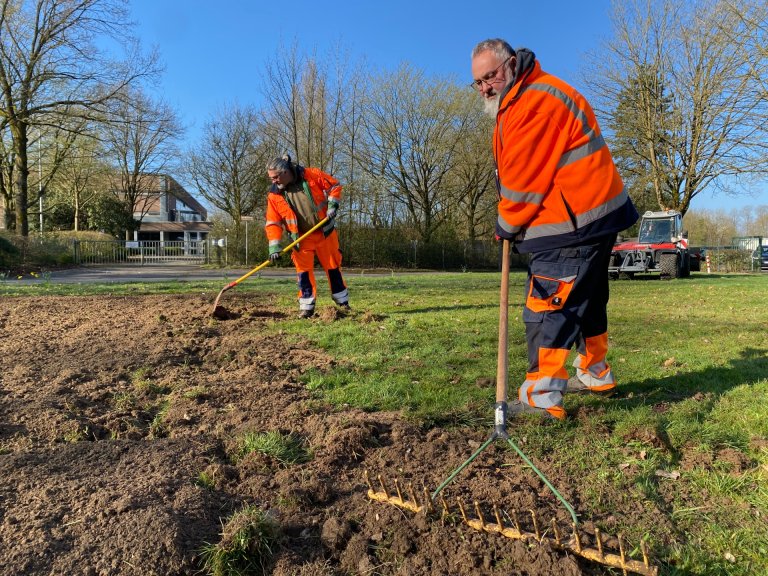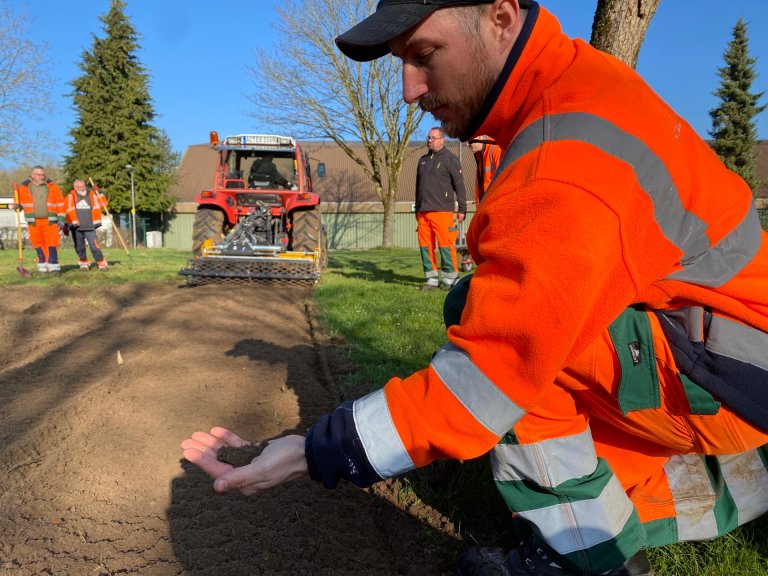Valuable flower strips bring color and biodiversity to urban green spaces
- The green maintenance crews of Aachen's municipal services are currently planting more new flower strips.
- The attractive areas can be found throughout the city and offer plenty of habitat for various small creatures.
- The areas will be extensively maintained until the fall.
It will take a few more weeks, but then the earthy surface will develop into a lush flowering area. Observers can hardly see anything of it yet, even if the soil that has just been dug up indicates that something is changing on the green space in Rombachstraße.
In the morning, the mowing crew from Aachen's municipal services worked on a marked-out area of around 500 square meters, where another large flowering area will be created. "Various preparatory work steps are necessary to create flowering areas," says Leonard Beissel, Head of Work Preparation for Urban Greenery and Districts at Aachen's municipal services: "First, the surface is milled and then, in what is known as fine levelling, the surface is prepared, for example by removing large stones to create a particularly smooth and even surface. It is then sown and rolled."
New seed mixtures are constantly being selected for the many locations of the flowering areas to ensure the highest possible diversity of plants and habitats for small animals. Flowering areas provide protection and food for insects and small creatures, improve the urban climate and make a significant contribution to climate protection by using less machinery than conventional lawn care.
The seed mixture used on Rombachstrasse is called "La Fleur Tenor" and includes corncock (purple flower/clove plant), maiden's eye (yellow flower/basket plant), gypsophila (white flower/clove plant), perennial flax (blue flower/clover plant), alpine forget-me-not (blue flower/reed plant) and has an average growth height of 70 centimetres. "When planting, it's important to choose the right seeds for the location and to sow them correctly," explains Leonard Beissel. Because: "More seed doesn't bring more, the plants need space to develop. We also make sure, among other things, that we don't mill in the root areas of trees to avoid damaging them." The soil and light conditions also play a major role in the good development of the area. Road safety must also continue to be guaranteed so that there are no visual obstructions for road users.
Professional maintenance required
If there is no rain, the areas are regularly watered by the green maintenance crews from Aachener Stadtbetrieb. The first plants develop four to six weeks after sowing. The flowering strip then changes constantly until the fall, with the different plant species blooming at different times, so that a different picture always emerges. In order to maintain the area for years to come, professional care is essential. "For example, we leave the cuttings on the area for a certain period of time after mowing," explains Leonard Beissel. "This allows dried flower heads to shed the seeds they contain and these germinate again in spring. This allows us to preserve different plant species, even if it sometimes seems as if the disposal of the cuttings has been "forgotten". When mowing, we also take care not to cut the plants completely so that we can continue to provide a habitat for small creatures and insects."
The flower strips remain in place for around three years. Over time, the areas lose their attractiveness because the grasses, especially the German ryegrass they contain, have a very short germination period and strong germination capacity and crowd out other species. As a result, such wildflower meadows become overgrown by lawns and wild herbs over time.
Tips for gardens and balconies
Flowering areas can also be easily implemented in home gardens and balcony boxes. The experts at Stadtbetrieb have put together a few tips:
Flower and seed mixtures generally prefer poor or lean soils, as they allow better rooting and aeration. Incorporating some grit or sand into the soil has a very positive effect on successfully creating a flowering area. "For balcony boxes or pots, it makes a lot of sense to mix sand with the normal potting soil before filling the containers," says Leonard Beissel. "For areas in the garden, it would be about three to five centimetres of sand, which is then worked in with a spade or shovel."
Leonard Beissel also advises following the manufacturer's instructions when sowing seeds. "Visually, it looks as if far too little has been applied, but appearances are deceptive. An oversized application is counterproductive because individual species with a longer germination period are crowded out."
During the germination process, the surfaces should be kept moist, but not wet. Containers and pots should be open at the bottom to allow excess water to drain away and prevent waterlogging. A mineral layer in the form of grit or even gravel for larger areas as a substrate counteracts waterlogging. The substrate in flower boxes and pots can also be filled with grit (two to five millimetres) so that water can seep away better.
You can subscribe to our RSS feed for our press releases here https://www.aachen.de/rss-feed-pressemitteilungen/rss.xml
